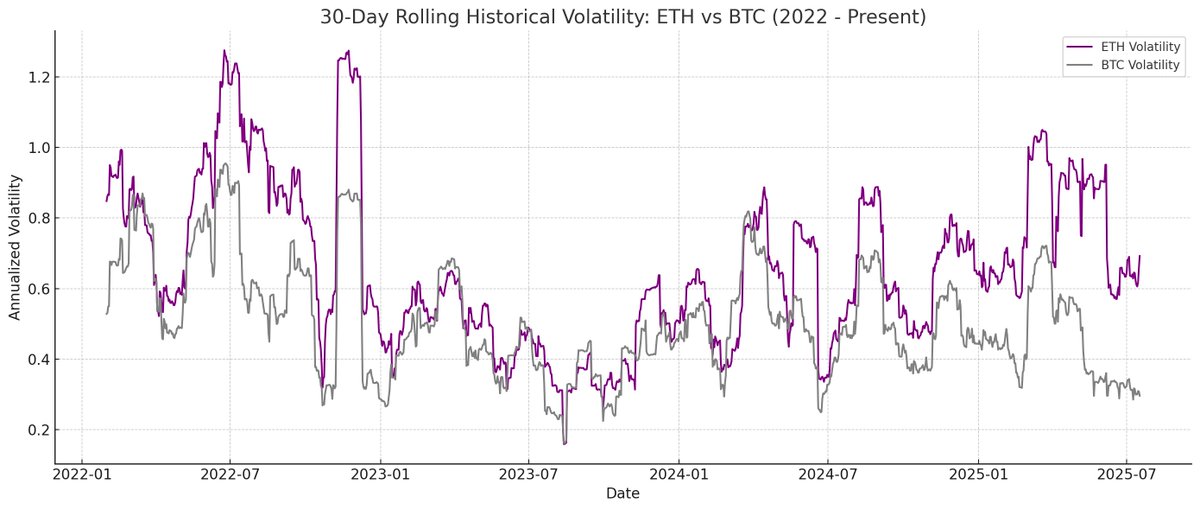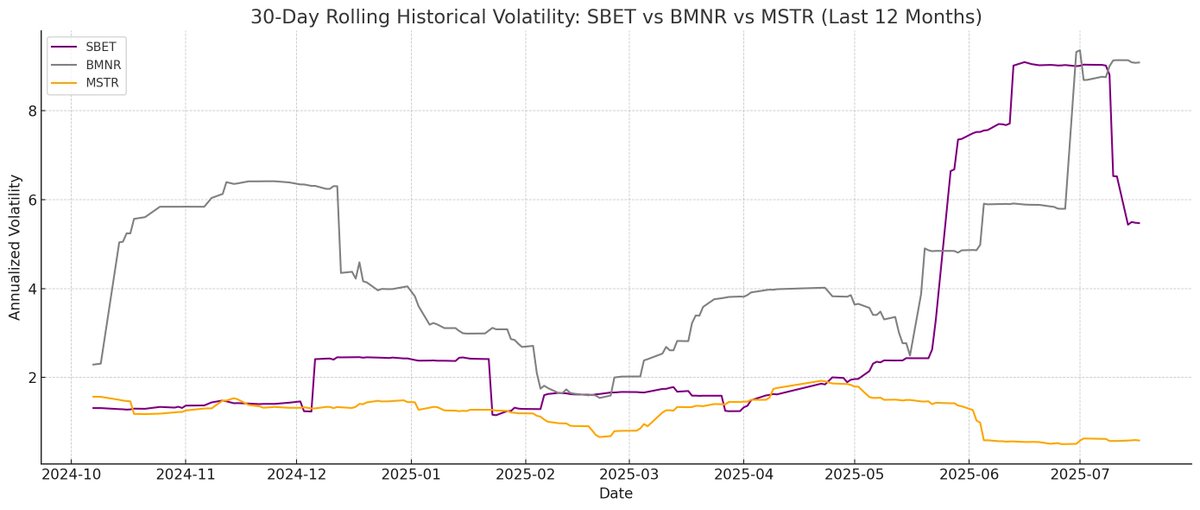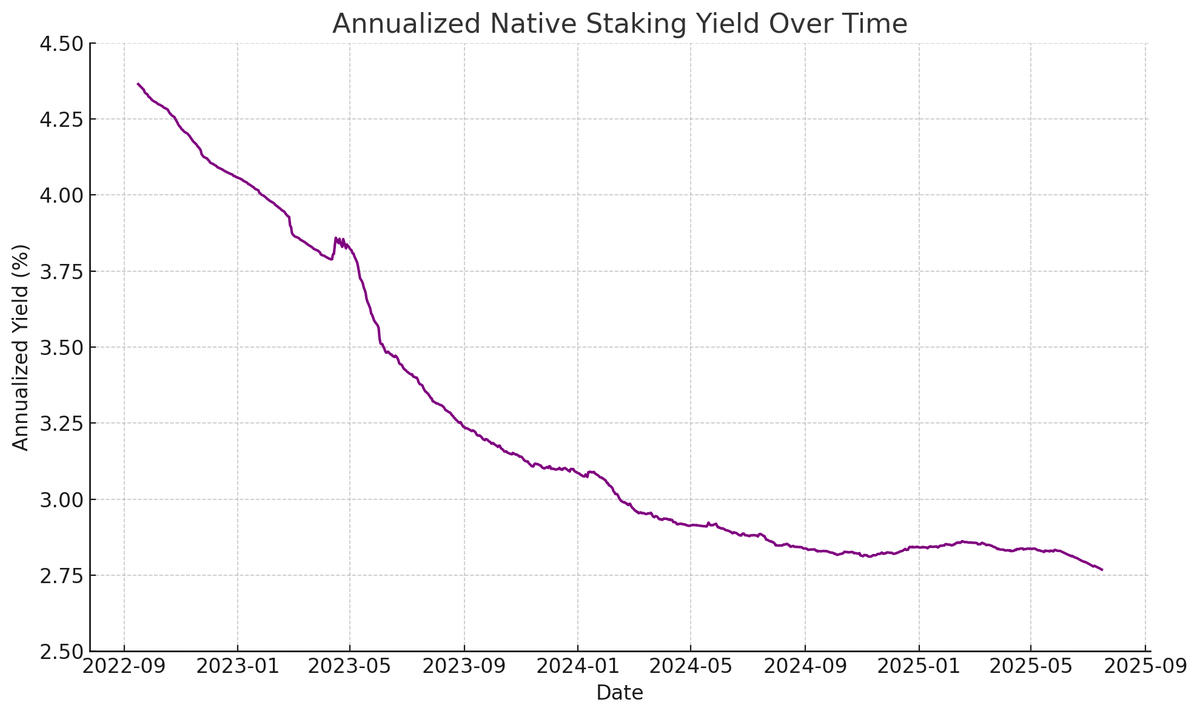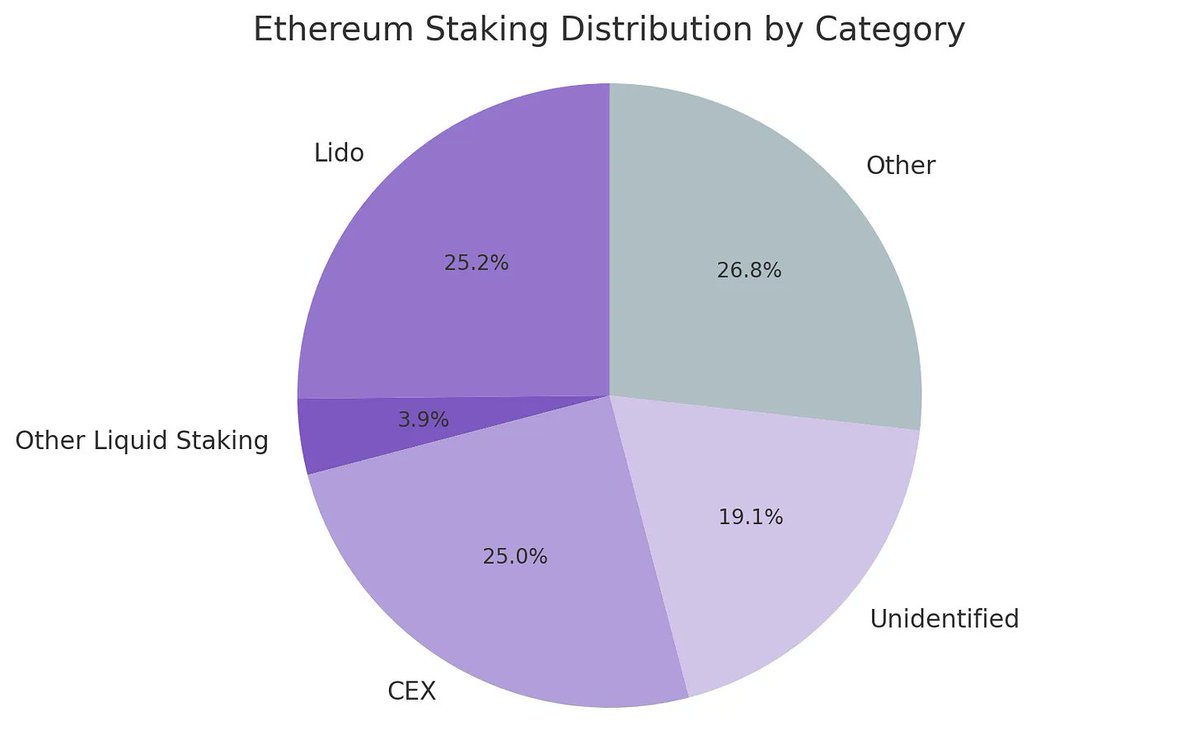Why is the ETH Treasury more likely to rise than Strategy? How to choose between the two giants SBET and BMNR?
This article is from: Penn Blockchain Co-Investment Director Kevin (@kevinlhr 88)
Compiled by | Odaily Planet Daily (@OdailyChina); Translated by | Azuma (@azuma_eth)

Although the crypto community has long been enthusiastic about introducing traditional assets onto the chain in the form of tokenization, the most significant recent developments actually come from the reverse integration of crypto assets into traditional securities. The recent public market's enthusiasm for 'crypto asset treasury' type stocks perfectly illustrates this trend.
Michael Saylor pioneered this strategy through MicroStrategy (MSTR), pushing his company's market value past the hundred billion dollar mark, with gains during the same period even surpassing Nvidia. We have conducted a detailed analysis in our special report on MicroStrategy (an excellent learning material for newcomers to the treasury field).The core logic of such treasury strategies lies in the fact that listed companies can obtain low-cost, unsecured leverage that ordinary traders cannot access.
Recently, the market's focus has expanded from BTC treasuries to ETH treasuries, such as Sharplink Gaming (SBET) led by Joseph Lubin and BitMine (BMNR) under Thomas Lee's leadership.
But is the ETH treasury really reasonable?As we demonstrated in the MicroStrategy analysis report, treasury-type companies are essentially trying to arbitrage the difference between the long-term compound annual growth rate (CAGR) of the underlying asset and the cost of capital.In earlier articles, we outlined our views on ETH's long-term CAGR:As a programmable scarce reserve asset, ETH plays a fundamental role in maintaining on-chain economic security as more assets migrate to blockchain networks.This article will explain the bullish logic of ETH treasuries in the grand scheme and provide operational recommendations for companies adopting this strategy.
Liquidity Access: The Cornerstone of Treasury Companies
One of the main reasons tokens and protocols seek to create these treasury-type companies is to open avenues for tokens to access traditional finance (TradFi) liquidity — especially against the backdrop of shrinking altcoin liquidity. These treasury companies primarily access liquidity to accumulate assets in three ways. Notably, this liquidity/debt is unsecured, meaning it cannot be redeemed early.
Convertible Bonds: Financing through the issuance of debt convertible into equity, with the proceeds used to purchase more cryptocurrency;
Preferred Equity: Financing through the issuance of preferred shares that pay a fixed annual dividend;
At-The-Market (ATM) Offerings: Directly selling new shares in the public market to obtain flexible, real-time funds for purchasing cryptocurrency.
Advantages of ETH Convertible Bonds
In our previous research on MicroStrategy, we pointed out that convertible bonds provide institutional investors with two major conveniences:
Downside Protection and Upside Opportunity: Allows institutions to gain exposure to the underlying asset (such as BTC or ETH) under the protective characteristics of bonds;
Volatility-Driven Arbitrage Opportunities: Hedge funds often profit from the volatility of the underlying asset and its securities through gamma trading strategies.
Among them, gamma traders (hedge funds) have become the dominant force in the convertible bond market. Compared to BTC, ETH has higher historical and implied volatility.The convertible bonds (CB) issued by ETH treasury companies can naturally reflect this high volatility in the capital structure, making them more attractive to arbitrageurs and hedge funds. More importantly, this volatility allows ETH treasury companies to issue convertible bonds at higher valuations, obtaining more favorable financing conditions.

Odaily Note: Comparison of historical volatility between ETH and BTC.
For convertible bond holders, higher volatility means increased opportunities to profit from gamma strategies. In short, the greater the volatility of the underlying asset, the more profitable gamma trading becomes, giving ETH treasury convertible bonds an advantage over BTC treasury ones.

Unlike convertible bonds, preferred shares are designed for fixed-income investors.While some convertible preferred shares have hybrid upside potential, yield remains the primary consideration for most institutional investors. The pricing of these instruments is based on credit risk — that is, whether the treasury company can reliably pay interest.
A key advantage of MicroStrategy's strategy is the use of ATM offerings to pay interest. Since this typically only accounts for 1-3% of market capitalization, the dilution risk is minimal, but this model still relies on the market liquidity and volatility of BTC and MicroStrategy's underlying securities.
ETH, on the other hand, can generate native yields through staking, restaking, and lending, providing greater certainty for preferred share interest payments and theoretically deserving a higher credit rating.Unlike BTC, which relies solely on price appreciation, ETH's returns combine long-term CAGR expectations with native yields at the protocol layer.

My innovative idea is:ETH preferred shares can serve as non-directional investment tools, allowing institutions to participate in network security maintenance without bearing ETH price risk.As we emphasized in the ETH report, maintaining at least 67% honest validators is crucial for network security. As more assets move on-chain, it becomes increasingly important for institutions to actively support Ethereum's decentralization and security.
Many institutions may be unwilling to directly go long on ETH, but ETH treasury companies can act as intermediaries — absorbing directional risk while providing institutions with fixed-income-like returns.The on-chain preferred shares issued by SBET and BMNR are precisely designed as fixed-income staking products, which can be made more attractive to investors seeking stable returns without wanting to bear full market risk through bundling protocol layer incentives, etc.
The key valuation metric mNAV (market capitalization to net asset value ratio) is conceptually similar to the price-to-earnings ratio, reflecting the market's pricing of future growth per share of assets.ETH treasuries naturally enjoy a higher mNAV premium due to their native yield mechanisms — these activities can generate persistent 'yields' or increase the amount of ETH per share without additional capital. In contrast, BTC treasury companies must rely on synthetic yield strategies (such as issuing convertible bonds or preferred shares), making it difficult to justify any yield when market premiums approach NAV.
More importantly,mNAV is reflexive — higher mNAV enables treasury companies to raise capital more valuably through ATM offerings.They issue shares at a premium and accumulate underlying assets, increasing the asset value per share and creating a virtuous cycle. The higher the mNAV, the stronger the value capture ability, making ATM offerings particularly effective for ETH treasury companies.
Capital access is another key factor. Companies with deeper liquidity and broader financing capabilities naturally achieve higher mNAV,while those with limited market access tend to trade at a discount. Therefore, mNAV typically reflects a liquidity premium — a manifestation of the market's confidence in a company's ability to effectively access more liquidity.
ATM offerings can be seen as financing from retail investors, while convertible bonds and preferred shares are usually targeted at institutional investors.Therefore, the key to a successful ATM strategy lies in building a strong retail base, which often requires credible and charismatic spokespersons, as well as continuous and transparent strategic disclosures to win long-term trust from retail investors. Conversely, convertible bonds and preferred shares require robust institutional sales channels and relationships with capital market departments.Following this logic, I believe SBET has more retail-driven advantages (thanks to Joe Lubin's leadership and the team's continuous transparency in increasing ETH per share), while BMNR, with Tom Lee's deep connections in traditional finance, is more likely to access institutional liquidity.One of the biggest challenges facing Ethereum is the increasing concentration of validators and staked ETH (mainly in liquid staking protocols like Lido and centralized exchanges like Coinbase). ETH treasuries can help counteract this trend, promoting validator decentralization. To enhance long-term resilience, these companies should distribute ETH across multiple staking service providers and operate their own validator nodes when possible.

Odaily Note: Distribution of Ethereum staking categories.
In this context,I believe the competitive landscape of ETH treasury companies will be fundamentally different from that of BTC treasury companies.The Bitcoin ecosystem has formed a winner-takes-all situation (MicroStrategy's holdings are more than 10 times that of the second-largest corporate holder), dominating the convertible bond and preferred share markets with first-mover advantage and strong narrative control. ETH treasuries, on the other hand, start from scratch, with no single dominant entity and multiple projects developing in parallel. This lack of first-mover advantage is not only healthier for the network but also fosters a more competitive environment for accelerated development.Given the similar ETH holdings of leading companies, SBET and BMNR are likely to form a duopoly.

Broadly speaking, the ETH treasury model can be seen as a fusion of MicroStrategy designed for traditional finance and Lido.Unlike Lido, ETH treasury companies can capture a larger proportion of asset appreciation by holding the underlying assets, far outperforming the former in terms of value accumulation.
Here's a rough valuation reference: Lido currently manages about 30% of staked ETH, with an implied valuation exceeding $30 billion. We believe that within one market cycle (4 years), SBET and BMNR could very well surpass Lido in combined size, driven by the speed, depth, and reflexivity of traditional financial capital flows (as demonstrated by MicroStrategy's growth strategy).
To add some background data, Bitcoin's market capitalization is $2.47 trillion, while Ethereum's is $428 billion (17-20% of Bitcoin's). If SBET and BMNR reach 20% of MicroStrategy's $120 billion valuation, their long-term value would be approximately $24 billion. Currently, their combined valuation is less than $8 billion, leaving significant room for growth as ETH treasuries mature.
The emergence and development of digital asset treasuries represent a major evolution in the further integration of crypto markets and traditional finance, with ETH treasuries becoming a strong new force. Ethereum's unique advantages (including higher convertible bond volatility and native yields from preferred shares) create differentiated growth space for treasury companies, and their ability to promote validator decentralization and stimulate competition further distinguishes them from the BTC treasury bond ecosystem.
The combination of MicroStrategy's capital efficiency and ETH's embedded yields can unleash tremendous value and push the on-chain economy deeper into traditional finance. Rapid expansion and growing institutional interest herald transformative impacts on crypto and capital markets in the coming years.
Related Reading
Has Sharplink's narrative bubble burst? The ETH version of Strategy remains undecided
